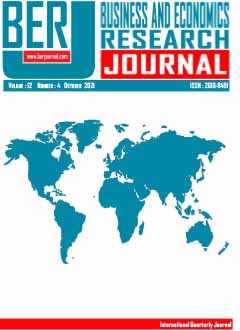Satın Alma Gücü Paritesi Geçerliliğinin Fourier Birim Kök Testi ile İncelenmesi: N-11 Ülkeleri Örneği
Investigation of the Validity of Purchasing Power Parity with Fourier Unit Root Test: The Case of N-11 Countries
Author(s): Tunahan HacıimamoğluSubject(s): Economy
Published by: Adem Anbar
Keywords: Purchasing Power Parity; Real Exchange Rate; Fourier Unit Root Test; Stationarity; N-11 Countries;
Summary/Abstract: Purchasing power parity (PPP) is an approach which is based on the law of one price and balances the purchasing power of currencies by excluding price differences among countries. The interest in the PPP hypothesis, which is also used as an international development criteria, has been increasing due to price instability and trade deficits faced by countries. Along with the increasing interest, the validity of the PPP hypothesis is tested more often for different country groups and time periods by using modern analysis methods. The aim of this study is to test the validity of the PPP hypothesis for the period 1970-2019 in nine of N-11 countries. Accordingly, the BCIPS unit root analysis method, which allows for cross-section dependence, soft breaks, and common factor structure and which was proposed by Lee, Wu, and Yang (2016), was used as a modern test technique in the study. The findings of the analysis suggest that the real exchange rates for N-11 countries are stationary, therefore, it is concluded that the PPP hypothesis is valid. In this respect, it is revealed that the effect of shocks on the real (effective) exchange rate in N-11 countries is temporary and that PPP can be used as a reliable indicator in monetary policy decisions and international development measures.
Journal: Business and Economics Research Journal
- Issue Year: 12/2021
- Issue No: 4
- Page Range: 799-811
- Page Count: 13
- Language: Turkish

